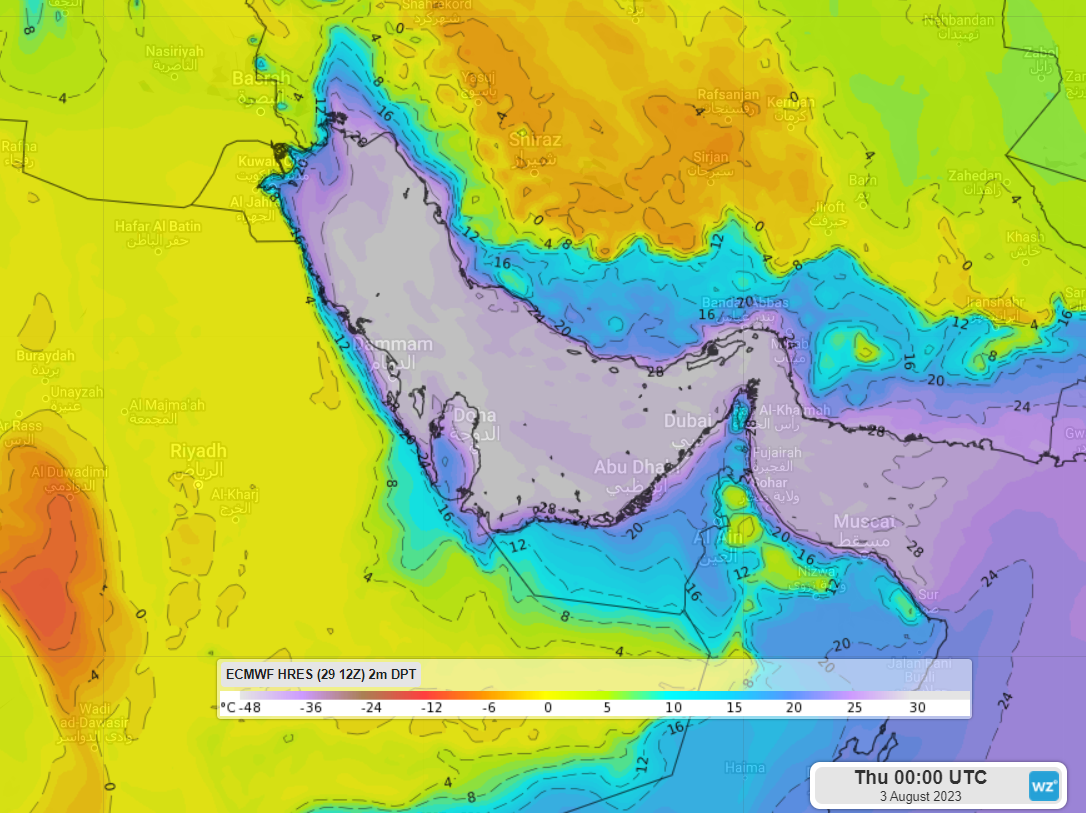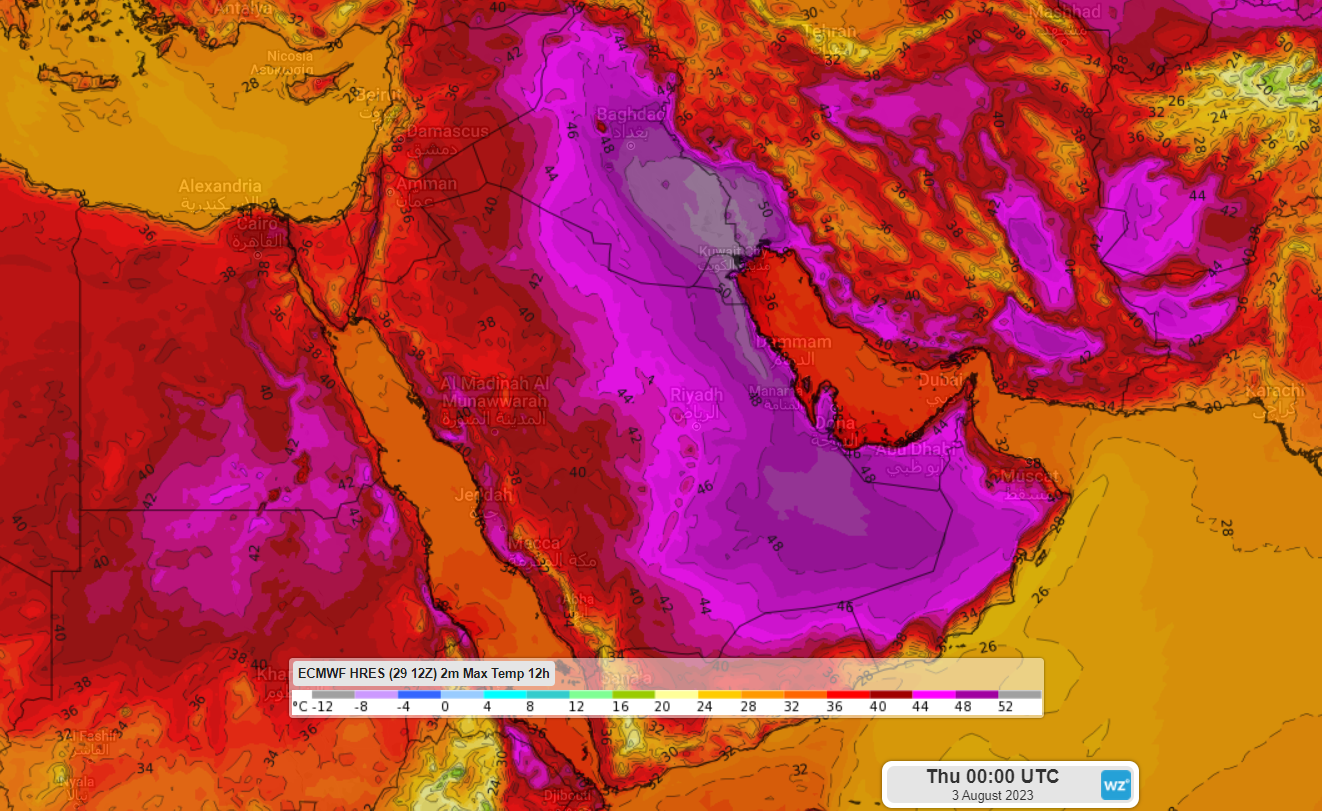Areas of the Middle East suffer from the most extreme summer yet
This past Wednesday, the World Meteorological Organization (WMO) issued a statement saying that July 2023 is on track to being the hottest month in the past 120,000 years, with the month's global average temperature being a degree high than July's global average. These statistics include the southern Hemisphere's winter temperatures! Click here for more information about the WMO's statement.
July 2023 has been a hectic summer for the Northern Hemisphere, with China recording its hottest temperature on record at 52.2 degrees, heatwaves stretching across Northern Africa, the Middle East, Europe, and North America, as well as forest fires along the Mediterranean coast and Canada.
The Middle East, particularly areas around the Persian Gulf, have suffered this summer. Though the Middle East is usually hot, the past three years have seen an increase in severe weather events such as extreme temperatures, dust storms, severe droughts, and tropical cyclone.
A persistent trough over the Persian Gulf draws dry northwesterly winds across Iraq and Kuwait. This has resulted in average daytime temperatures over the two countries being above the average maximum of 45 degrees. For example, in Basra, Iraq, the coldest day had failed to stay below 46 degrees everyday this month, peaking at 51 degrees on July 21st. Nights have not brought much relief with minimum temperatures staying above 27 degrees for the entire month. This makes July 2023 1-3 degrees warmer than the monthly average between 1990 and 2020 for all sites in Iraq and Kuwait. This may not appear internationally significant, but with these July temperatures it already makes this year one of the hottest years on record, along with 2021 and 2009... and we're only in mid-summer!
Further, the surface waters of the Persian Gulf have also increased this year, averaging at 32 degrees. This has caused intense humidity for this time of the year for cities in the Peninsula. The combination of high humidity and high air temperatures results in extremely elevated feels-like temperatures. The Persian Gulf International Airport reported a feels-like temperature of 66.7 degrees on the 16th of July. Humidity in Bahrain has been lingering around the 90% mark with air temperatures of 42 to 44 degrees. This made the temperature feel anywhere between 58 and 66 degrees this month.

Image 1) Surface (2m) dewpoint temperature in the Persian Gulf on Thursday 3rd morning using ECMWF. Areas in blue would be considered ’high humidity’ while those in purple are ’extremely humid’.
Workers in the Middle East are struggling, with severe weather making it unbearable to be outside from 3:00pm to 3:30pm in the afternoon. Mortality from heat strokes has increased in the Middle East in the recent past, with an average of 8904 people a year. Going by country, Iran is topping the list with 11 deaths per 100,000 people. With increased vulnerability, the risk of heat-related mortality is projected to increase to over 250 people per 100,000.
Currently, the Middle East is facing the peak of summer. Every time the area of low pressure strengthens, temperatures and feels-like temperatures soar in the regions around and north of the Persian Gulf. This coming Thursday, temperatures are expected to reach new records once more.

Image 2) Forecast maximum temperatures over the Middle East on Wednesday 2nd August. Areas in grey are exceeding 50 degrees.